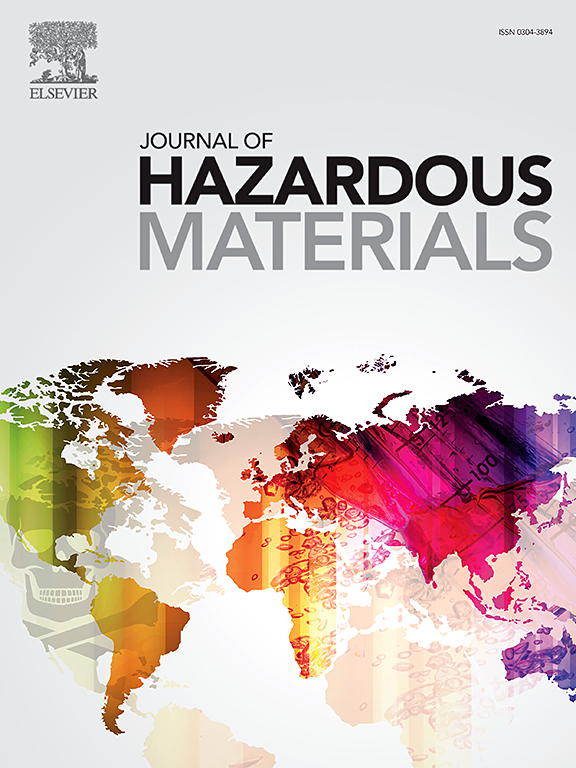Mechanism of electrochemical algal control and its effect on metabolic pathways of algal cells
IF 11.3
1区 环境科学与生态学
Q1 ENGINEERING, ENVIRONMENTAL
引用次数: 0
Abstract
Algal blooms cause significant ecological and economic issues. Electrochemical methods inhibit algal blooms effectively, but their effects on algal cell gene expression and metabolic pathways remain underexplored, requiring further mechanistic and ecological data to elucidate these mechanisms. This study revealed the control mechanism of electrochemical methods on Microcystis aeruginosa using flow cytometry, real-time PCR and untargeted metabolomics. Results indicate that electrochemical treatment induces oxidative stress, severely damaging algal cell membranes and impairing cell activity. Gene transcription analysis reveals that •OH oxidation leads to lipid peroxidation, damaging proteins, biological macromolecules, and the photosynthetic system. Metabolomics data show disruptions in amino acid, carbohydrate, and sphingolipid metabolism, affecting the tricarboxylic acid cycle, transporter proteins, and photosynthesis. These findings elucidate the mechanisms by which electrochemical methods control cyanobacterial blooms, offering theoretical and practical insights for effective management strategies.

电化学控制藻类的机理及其对藻类细胞代谢途径的影响
藻华造成了严重的生态和经济问题。电化学方法有效抑制藻华,但其对藻细胞基因表达和代谢途径的影响尚不清楚,需要进一步的机制和生态学数据来阐明这些机制。本研究通过流式细胞术、实时荧光定量PCR和非靶向代谢组学等手段揭示了电化学方法对铜绿微囊藻的控制机制。结果表明,电化学处理可诱导氧化应激,严重损伤藻类细胞膜,降低细胞活性。基因转录分析表明,•OH氧化导致脂质过氧化,破坏蛋白质、生物大分子和光合系统。代谢组学数据显示氨基酸、碳水化合物和鞘脂代谢被破坏,影响三羧酸循环、转运蛋白和光合作用。这些发现阐明了电化学方法控制蓝藻华的机制,为有效的管理策略提供了理论和实践见解。
本文章由计算机程序翻译,如有差异,请以英文原文为准。
求助全文
约1分钟内获得全文
求助全文
来源期刊

Journal of Hazardous Materials
工程技术-工程:环境
CiteScore
25.40
自引率
5.90%
发文量
3059
审稿时长
58 days
期刊介绍:
The Journal of Hazardous Materials serves as a global platform for promoting cutting-edge research in the field of Environmental Science and Engineering. Our publication features a wide range of articles, including full-length research papers, review articles, and perspectives, with the aim of enhancing our understanding of the dangers and risks associated with various materials concerning public health and the environment. It is important to note that the term "environmental contaminants" refers specifically to substances that pose hazardous effects through contamination, while excluding those that do not have such impacts on the environment or human health. Moreover, we emphasize the distinction between wastes and hazardous materials in order to provide further clarity on the scope of the journal. We have a keen interest in exploring specific compounds and microbial agents that have adverse effects on the environment.
 求助内容:
求助内容: 应助结果提醒方式:
应助结果提醒方式:


